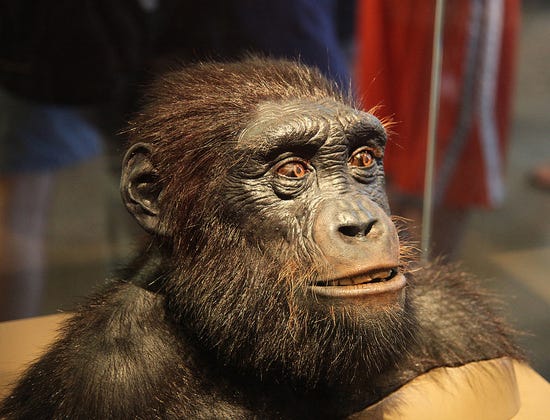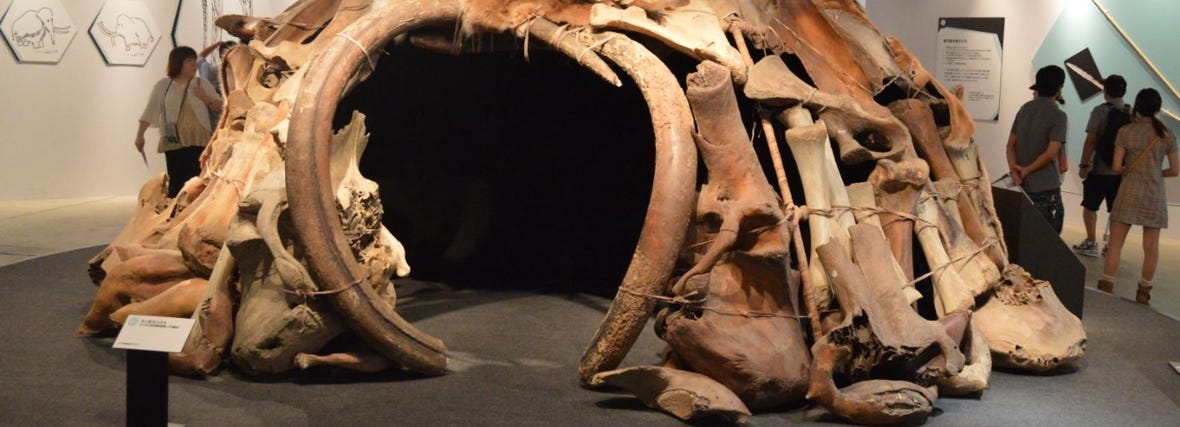Surprisingly, Neanderthals were as intelligent as Homo Sapiens, study finds
Neanderthals were capable of symbolic thought, could create artistic objects, and knew how to decorate their bodies using personal ornaments

[Oct. 27, 2023: Staff Writer, The Brighter Side of News]
Neanderthals weren't just able to use fire—they were skilled in creating and maintaining it. (CREDIT: Creative Commons)
Neanderthals, our ancient relatives, have often been the subject of intense research and curiosity. New studies from the Gruta de Oliveira in Portugal confirm what many archaeologists suspected: Neanderthals weren't just able to use fire—they were skilled in creating and maintaining it.
Diego Angelucci, an archaeologist from the University of Trento and a co-author of this study, states, "This confirms our observations and theories from previous studies. Neanderthals were capable of symbolic thought, could create artistic objects, and knew how to decorate their bodies using personal ornaments." More significantly, he adds, "Based on our findings, we can say with certainty that they habitually ate cooked food. This ability confirms that they were as skilled as the sapiens who lived millennia later."
So, how do we know about the Neanderthals' relationship with fire? According to Angelucci, while most archaeologists agree that Neanderthals knew how to harness fire, there is a distinction between using fire created by natural events like lightning and actually producing and sustaining it for cooking, heating, and defense. "In this study, we demonstrate that Neanderthals could indeed make a fire and that fire was central to their daily life."
Gruta de Oliveira. (CREDIT: João Zilhão)
Related News
The Gruta de Oliveira cave in central Portugal provides a unique window into the Middle Palaeolithic era. Archaeologists excavated this site between 1989 and 2012, spending over twenty years unearthing its secrets. The cave is part of the expansive Almonda karst system, which is a series of caves at different levels above a large spring. These caves have witnessed various inhabitants throughout prehistory.
Angelucci comments on the rich history of the Almonda caves, saying, "From the remains dating back to the Lower Palaeolithic to the chipped stones of the Mousterian culture, there is really everything."
The Remnants of Ancient Lives
Among the remarkable discoveries within Gruta de Oliveira were traces of intentionally constructed hearths. About a dozen such hearths, ranging in depth up to 6 meters, were found, giving evidence that the inhabitants of these caves were well-acquainted with fire.
Gruta da Oliveira in its geomorphological setting: the red star indicates the Almonda spring. Archaeological sites of the Almonda karst system discovered and archaeologically excavated since 1988. (CREDIT: PLOS)
Angelucci notes, "We found burnt bones, burnt wood, and ash remains. The rock underneath has been reddened by the heat. This suggests the structure has always been in that position. Fire was clearly essential in their daily lives."
Findings from these hearths reveal a lot about the Neanderthal diet. They consumed goats, deer, horses, aurochs (extinct bulls), rhinos, and even turtles. Other excavation sites near the western Mediterranean Sea in Spain have shown a diet inclusive of fish, mussels, molluscs, and roasted pine nuts. "Neanderthals had a varied diet, and the Portuguese excavations have further confirmed that they used fire to cook food," Angelucci adds.
Stone tools. 1–2. Denticulated sidescrapers; 3. Cleaver; 4. Laminar flake; 5. Perforator; 6. Denticulate; 7. Laminar Levallois flake; 8. Levallois flake; 9. Refitted Levallois core (1–2., 6–9. Chert; 3. Quartzite; 4–5. Quartz) (CREDIT: PLOS)
However, one question remains unanswered: How did Neanderthals start their fires? While they might have used techniques similar to those employed during Neolithic times, striking flint rocks against other rocks to create sparks, definitive evidence of such practices hasn't been found at the excavation sites.
Moreover, Angelucci points out that when comparing data from different layers spanning 30,000 years, there seems to be no difference between Neanderthals and later Homo Sapiens in terms of cave habitation and skills. "They did not belong to different species; they were different human forms."
Excavation in the Gruta de Oliveira. (CREDIT: João Zilhão)
This study is the culmination of thirty years of dedicated research. The Portuguese team, led by João Zilhão, specialized in examining the stone tools, while Mariana Nabais delved into the bone remains and spatial positioning of the finds. The team from the University of Trento focused on stratigraphy and microscopic studies.
Angelucci proudly says, "We relied on interdisciplinary archaeology techniques, from meticulous excavation to accurate data collection and sample analysis. This type of archaeology is carried out with the most advanced methodologies."
In a world where we often look forward for technological advancements, such studies remind us to also look back, understanding our ancestors and appreciating the depth of their intelligence and adaptability.
For more science and technology stories check out our New Discoveries section at The Brighter Side of News.
Note: Materials provided above by The Brighter Side of News. Content may be edited for style and length.
Like these kind of feel good stories? Get the Brighter Side of News' newsletter.



